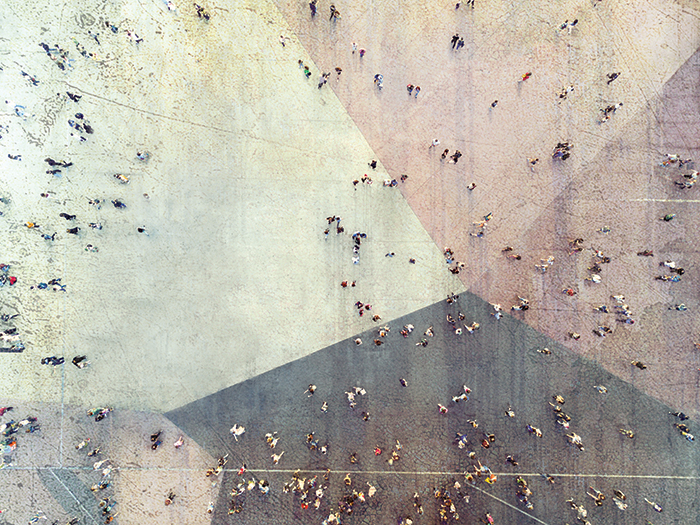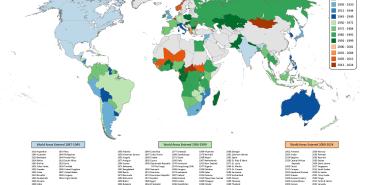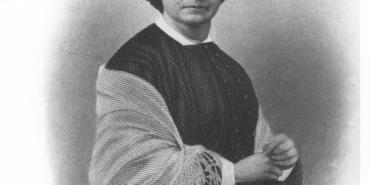To Be Human Again

As the Candleholder in Disney’s Beauty and the Beast wraps his arm around the Clock in a comforting gesture, he delightfully sighs, “Ah, to be human again. Think what that means!” Clocks, dishes, wardrobes, and a host of “humanlike” furniture begin to celebrate at such a towering thought. They spin around the halls crying out in a song of redemption, almost bursting with the hope that one person’s curse that has affected them will now be broken by the loving act of another! “It’s my prayer,” the Wardrobe reverberates in a worshipful tone, “to be human again!”1 They long to be what they were always meant to be.
This stunning portrait of redemption echoes the familiar story of redemption given to us in Christ.
Christ’s humanity teaches us how to be human beings made in the image of God.
The “Human” Dilemma
It is hard to be optimistic about being human these days. After centuries of wars, countless genocidal atrocities, a long history of political and religious corruption, and the rise of pessimistic views about human nature, it is not surprising that we live in a “generation awed by its rediscovery of the deep sinfulness of [humanity].”2 Martin Luther’s phrase “sin boldly”3 is rooted in a belief that this is our only choice. The idea that we’re “only human”4 implies that transgression is inevitable. Our perspective has been infiltrated and skewed. This pessimistic view of humanity has made being human synonymous with being sinful. However, though we can and do sin, the life of Jesus reminds us that being human means more than simply being sinful.
Passages throughout Scripture demonstrate the worst of humanity’s inclination toward transgression. However, to insinuate of the sin of Adam and Eve in Genesis is the essence of what it means to be human is to miss the story of God’s redemption. Part of the problem arises when it is suggested that being flawed, fragile, finite, and fallible is equivalent to a sinful disposition. To imply that incomplete knowledge or simply making a mistake (like making a mistake on a math test) is tantamount to sin only muddies the redemptive waters.
“We are no more to expect,” John Wesley once said, “to be infallible, than to be omniscient.”5 Even so, it is also apparent in Scripture that humankind has a special place in creation (see Psalm 8). Galaxies, the sun, mountains, oceans, and creatures might reflect something about God’s greatness, but they have not been created, as humans have, in the “image of God” —made to mirror God’s character.
Looking back to the “good” creation of humankind and to that dreadful consequence that ensued, it is evident that Adam’s sinful choice resulted in fear infiltrating God’s creation for the first time. This disrupted the best of what it means to be human: our relationships. Every relationship was affected: God and humans, interpersonal relationships, people and animals, and people and the earth.6 Sin is the antithesis to what it means to be human, because it fragments relationships.
This disruption cries out for a remedy (see 1 John 4:16-21).
In Light of Christ’s Humanity
Scripture tells of a created order that has gone awry through the sinful act of Adam, and that an ongoing saga of redemption is being offered through the second Adam, Jesus Christ (see Rom. 5:12-21; 1 Cor. 15:20-22). The incarnation—Jesus Christ entering into our world through a very human womb—is the greatest compliment God could ever give to humanity. When Jesus describes Himself as “the Son of Man,” He is more than giving Himself a title equivalent to the attributes of a deity. He is also referring to God’s relationship with humanity, as promised in Ezekiel. The term “Son of Man” is best rendered as something like “the human being.”7
This relationship with humanity is best realized in Jesus’ baptism. When Jesus comes up out of the water, the heavens are opened, and the Spirit of God descends like a dove on Him. We are reminded of the familiar words in Genesis 1:2, when the earth was formless and void, and “the Spirit of God was hovering over the waters” (NIV).
Something new has happened here: a new beginning for humanity!
In Jesus’ baptism, God does not say to humans, “I give up! I have had enough! I just need for humans to escape out of their sinful bodies and stop being human so that their ‘spirits’ can be set free,” like the group called “Gnostics” believed. Instead, God provides a remedy to sin by sending His Spirit into the human believer. Human beings are now empowered to be who God created them to be.
Certainly, our physical body is marred and bruised by the pain of sin, but the body itself is not evil. Sin is not rooted in the body. Sin is an inclination, as Wesley expressed, that is rooted “in the soul.”8 Our frailties are merely the result of the consequences of sin. James K. A. Smith rightly said, “My body is not something I have, but something I am; it is the me that dwells in the world.”9
In God’s Image, Despite our Frailty
If we comprehend the root of sin’s problem as a relationally disruptive act and not merely as a foreign entity running through our veins, then we see the work of Christ clearly. The motivation for Jesus to die at the cross is relational: He did it to demonstrate His love for us (see Rom. 5:8). Jesus’ ministry can be defined as a relational response of reconciliation with human beings. Jesus saw something in those on the fringes of society: a woman at a well, a Roman centurion, a woman caught in adultery, and in little children. He saw people with the potential to become “human” again.
There is a tendency to live our lives (even as Christians) under the assumption that the first Adam is all that we are meant to be: cursed by sin and slaves to our sinful bodies. However, if we choose to believe in the second Adam—Jesus—we find that His loving grace and His humanity have provided a remedy. The curse has been reversed. We can become what God intended for us to be: human again, and in right relationship with our Father.
“Ah, to be human again. Think what that means!”
H. Gordon Smith III is pastor of Frankfort First Church of the Nazarene in Frankfort, Indiana, USA.
1. Beauty and the Beast, directed by Gary Trousdale and Kirk Wise (Walt Disney Pictures, 1991)
2. H. Ray Dunning, Pursuing the Divine Image, (California: CreateSpace Independent Publishing Platform, 2016), 9.
3. Martin Luther, Luther’s Works, Vol. 48 (Minneapolis: Fortress Press, 1963), 281-282.
4. James Harris III and Terry Lewis, “Human.” Lyrics. Performed by The Human League, Crash. Flyte Time Studios, 1986.
5. John Wesley, “Christian Perfection,” in The Works of John Wesley, Vol. 6, ed. Frank Baker (Grand Rapids: Baker Books, 2007), 4.
6. Terence E. Fretheim, “The Book of Genesis,” in New Interpreter’s Bible, Vol. 1 (Nashville: Abingdon, 1994), 362.
7. Walter Wink, The Human Being (Minneapolis: Fortress Press, 2002), 19-25.
8. John Wesley, “On Perfection,” in The Bicentennial Edition of the Works of John Wesley, Vol. 3, Ed. Albert C. Outler (Nashville: Abingdon Press, 1984), 87.
9. James K. Smith, Imagining the Kingdom (Grand Rapids: Baker Academic, 2013), 49.
Holiness Today, January/February 2019
Please note: This article was originally published in 2019. All facts, figures, and titles were accurate to the best of our knowledge at that time but may have since changed.




